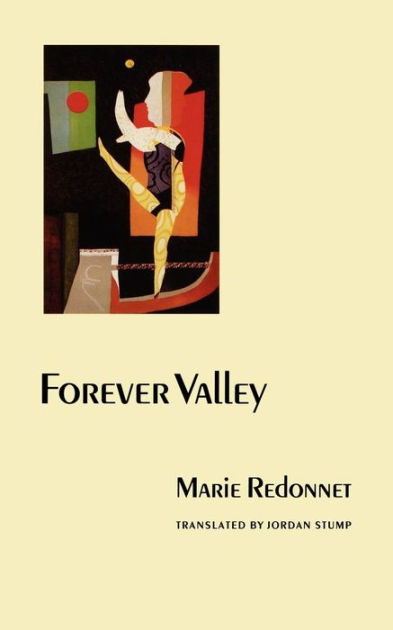Kelly Krumrie’s figuring
On Dams
Figuring is a monthly column that puzzles over (to figure) and gives shape to (a figure) writing, art, and environments that integrate or concern mathematics and the sciences. This month’s column ponders water, power, possession, and human space.
Kelly Krumrie’s figuring
On Dams
Figuring is a monthly column that puzzles over (to figure) and gives shape to (a figure) writing, art, and environments that integrate or concern mathematics and the sciences.
The documentary Before the Flood (Yan Mo) (2005), directed by Li Yifan and and Yan Yu (not the climate documentary with same English title starring Leonardo DiCaprio), records an incomprehensible period in the destruction of the city of Fengjie before it’s flooded by the Yangtze River as part of the construction of the Three Gorges Dam. The city was over one thousand years old, one of China’s most densely populated, and it sat between the river and low, green mountains. The film begins and ends during the process of relocating all 100,000+ residents while physically demolishing the city itself. Old stone passageways, city gates, busy streets, people leaning over balconies, honking trucks, crowds, offices, people in polo shirts with clipboards—all in a state of half-destruction, buildings torn open, hand carts overflowing with furniture. In an observational, fly-on-the-wall style, for about two and a half hours, the film follows citizens trying to negotiate their relocation, the square footage of their new residences (if they’re getting one), what to bring and what to leave, how much money they can get for salvaging parts of their homes and businesses. Someone discusses the price of a railing along a staircase in an alley while another yanks it free. Little information is given except for the names of a few figures to whom the film returns, such as members of a church who argue over their accounting and the owner of a hostel and his residents. Many of the people still living in the city or in the process of leaving are exceedingly confused about where to go and when, and who will pay for it. Meanwhile, the filmmakers pan out to the river, the landscape, and, over and over, buildings collapsing by detonation and being taken apart by hand.

It’s the latter that’s stuck with me since I watched the film: men with sledgehammers taking down a building piece by piece: chunks of concrete and tangles of salvaged wire. That and piles of belongings teetering down the street. That and elderly members of the community who cannot fathom leaving it, nor do they have anywhere to go, leaning against homes that have been scheduled to be demolished impossibly soon (the next day?). They drag home buckets of water because the city’s shut it off, and the electricity. It’s confusing and frustrating to watch. I watched it over two nights, and during both sittings, I kept looking things up, pausing to get more information, which I know is what I shouldn’t have done. My confusion from a place of total removal, something I thought I could remedy with fact. The logistical nightmare of timelines, housing lotteries, payouts, eligibility… Why did they have to demolish the buildings before the flood? Why not leave them up? To reuse as much as possible, to carry it down the wide, misty river.
At one point, the hostel owner scrambles down a steep hill in New Fengjie, where many are relocating, toward the flat space between two concrete pillars that make up part of a massive bridge to see if he could rebuild his hostel in that unclaimed space. What we never see is what I was obsessed with seeing as I watched, part of what kept me leaning toward my laptop screen: the actual flooding of the city, the completion of the demolition, everyone out. When the film ends, much of the city is still standing, many people still live there. I couldn’t help but try to imagine it submerged, and I find that fantasy awful. The Three Gorges Dam—which we never see in the film—now generates more power than any other power plant in the world.
A few weeks later, I read Marie Redonnet’s 1986 novel Forever Valley translated by Jordan Stump. The sixteen-year-old narrator lives with an aging priest in a rectory and soon begins working at the dancehall next door. Her job is to dance with and entertain men who come up to Forever Valley from a lower valley—the landscape mountainous beyond—and then sleep with them. This work earns her money which she hands over to the priest. The narrator is illiterate and owns nothing other than the dress and shoes the dancehall owner gives her. But during the week, she works on a “personal project”: she digs a series of rectangular pits around the ruined church “to look for the dead.” She finds only mud and rock. Digging pits and finding nothing in a valley above a valley. In the end, a dam is built, an aquifer is tapped, and Forever Valley is flooded to generate electricity for the citizens of the valley below, where the narrator is forced to relocate. Her dress is ruined, she has no money, and the pits she’s dug—the pits that had nothing in them—are flooded along with the rectory, church, dancehall, and landscape. At the novel’s close, she visits the new reservoir:
I don’t know how I felt when I saw that the hamlet was no longer there. I saw an expanse of water where it used to be. They say it is very deep. I threw in the patent leather high-heeled shoe left over from the dancehall. I can’t do anything with one shoe. It sank right away. It must be deep. The water has a dark color because of the mountains reflected in it. Everything gets mixed up inside my head when I look at the water in the reservoir and tell myself that down on the bottom there is the hamlet… I spend hours looking at the water. No matter how much I look, I can never see the bottom. All I see is the mountains reflected in the water, and the path leading up to the pass.
Forever Valley’s themes of possession and power (including electricity) are rendered in short, objective observations by an illiterate adolescent—a strange reportage. The only two words she says she’s learned to read are “dancing” and “dam.” The shape of her experience, including her impact on the land by digging pits and what the landscape does to her once water is tapped for flooding, reminded me of this passage from Andrea Ballestero’s 2019 article “Living with Aquifers” in e-flux:
Aquifers seem unremarkable until one stops to think carefully about their form. Their histories and futures are not always available for human sensing. As part of the subterranean, aquifers are sometimes taken as chthonic structures, constituting the world of deities and spirits that lies below the surface. Alternatively, aquifers are taken as nothing more than subterranean containers, tanks holding water until humans decide they want to extract it. And yet, regardless of how one makes sense of them, thinking about aquifers depends on a double movement. They require pushing the imagination downward and pulling hydro-lithic structures upward.
In Fengjie and Forever Valley, something becomes newly submerged, nearly subterranean, and this puts a weird strain on the imagination: even with evidence, a document of social, political, environmental, and economic travesty; even for a fairy tale that could be in any time or place—both with structures built with the intention of generating more (“cleaner”?) power to benefit the people displaced.
I can imagine a drowned city, can’t I? Not Fengjie as I picture it now, fixed in what Li Yifan and Yan Yu left me with. Nor can I really imagine an aquifer, even if I look it up. Worse, the power generated.
I want to stretch my thinking—what I can picture—about situations real and imagined. How do we show these processes, these shapes, these experiences, this power? I put out a call on Twitter and Instagram for film, art, and writing that feature dams (including reservoirs, levees, and weirs). Below is a bit of what I’ve found and what folks have been kind enough to suggest. These capture histories, laws, land, death, climate, justice, water rights, and action real and fantastic (a few are even a little silly). I haven’t read, watched, or seen most of them yet, though, and I’m sure there are many more. To account for the latter, I’ve also made a Google Doc of this list so I can easily update it. I hope it’s useful for anyone wondering similarly. Please let me know if there’s something I should add.
FICTION
“Alluvial Deposits” from Damned If I Do by Percival Everett (Graywolf, 2004)
Animal Dreams by Barbara Kingsolver (HarperCollins, 1990)
The Beetle Leg by John Hawkes (New Directions, 1951)
The Ford by Mary Austin (University of California Press, 1997)
Forever Valley by Marie Redonnet, translated by Jordan Stump (University of Nebraska Press, 1994)
—see also Redonnet’s novels Rose Mellie Rose for an island and Hôtel Splendid for a swamp
The God of Small Things by Arundhati Roy (HarperCollins, 1997)
Human Mourning by Jose Revueltas, translated by Roberto Crespi (University of Minnesota Press, 1990)
The Monkey Wrench Gang by Edward Abbey (Dream Garden, 1985)
The Old Drift by Namwali Serpell (Penguin, 2020)
Solar Storms by Linda Hogan (Scribner, 1995)
Storm of Locusts by Rebecca Roanhorse (Simon & Schuster, 2019)
“Thin Cities 1” from Invisible Cities by Italo Calvino, translated by William Weaver (Harcourt, 1974)
The Thin Place by Kathryn Davis (Little, Brown, 2006)
Wind from an Enemy Sky by D’Arcy McNickle (University of New Mexico Press, 1988)
NONFICTION
“At the Dam” & “Holy Water” by Joan Didion in The White Album (Simon & Schuster, 1979)
Cadillac Desert by Marc Reisner (Penguin, 1993)
“The Hetch Hetchy Valley” by John Muir (Sierra Club Bulletin, 1908)
“Living with Aquifers” by Andrea Ballestero (e-flux, 2019)
Northern Light by Kazim Ali (Milkweed Editions, 2021)
“Water Under the Bridge? Nature, Memory and Hydropolitics” by Hywel M. Griffiths (Cultural Geographies, 2013)
POETRY
The Battlefield Where the Moon Says I Love You by Frank Stanford (Lost Roads, 2000)
“Boulder Dam” by May Sarton (Poetry, 1942)
“The Dam” from The Book of the Dead by Muriel Rukeyser (West Virginia UP, 2018)
“Interview with Water” (lecture) by Alice Oswald (The Oxford Research Center in the Humanities, 2020)
“Reservoir” by Taneum Bambrick (2016)
“A Voice from Death” by Walt Whitman (1889)
FILM
Before the Flood (Yan Mo), directed by Li Yifan and and Yan Yu (2005)
—see also the film Still Life by Jia Zhangke, a fictional narrative based on the footage from Before the Flood and filmed in Fengjie around the same time, then next watch Jia Zhangke’s Dong which he made with/about the painter Liu Xiaodong at the same time—to say, these form a triptych of Fengjie footage
Frozen II, directed by Chris Buck and Jennifer Lee (2019)
The Fugitive, directed by Andrew Davis (1993)
The Girl with the Red Scarf, directed by Atif Yilmaz (1978)
The Hunger Games: Mockingjay Part I, directed by Francis Lawrence (2014)
—I can’t remember if this scene was in the book? I assume so?
Lost in America, directed by Albert Brooks (1985)
O Brother, Where Art Thou?, directed by Joel and Ethan Coen (2000)
The Sleep Dealer, directed by Alex Rivera (2009)
X2, directed by Bryan Singer (2003)
VISUAL / OTHER ARTS
Dam (photographs) by Toshio Shibata (Nazraeli, 2004)
—rich Google Image searching here
The Weir (play) by Conor McPherson

About the Author
Kelly Krumrie‘s prose, poetry, and reviews are forthcoming from or appear in Entropy, La Vague, Black Warrior Review, Full Stop, and elsewhere. She is a PhD candidate in Creative Writing at the University of Denver where she serves as the prose editor for Denver Quarterly.